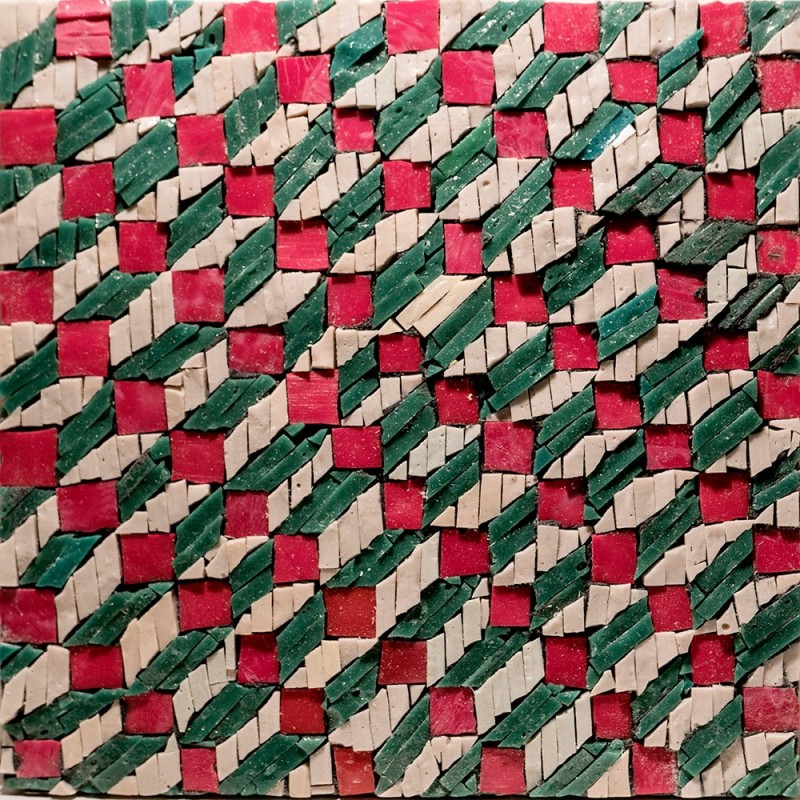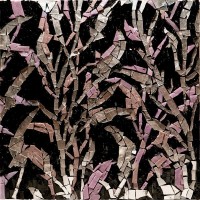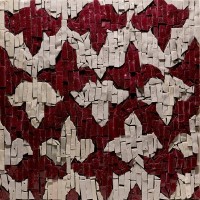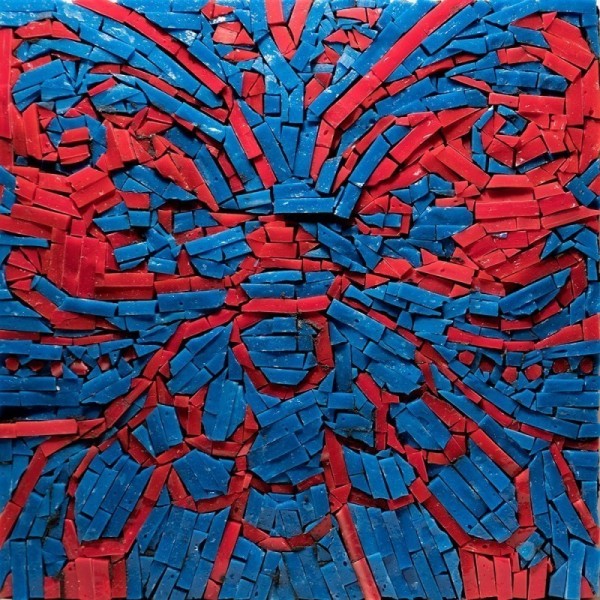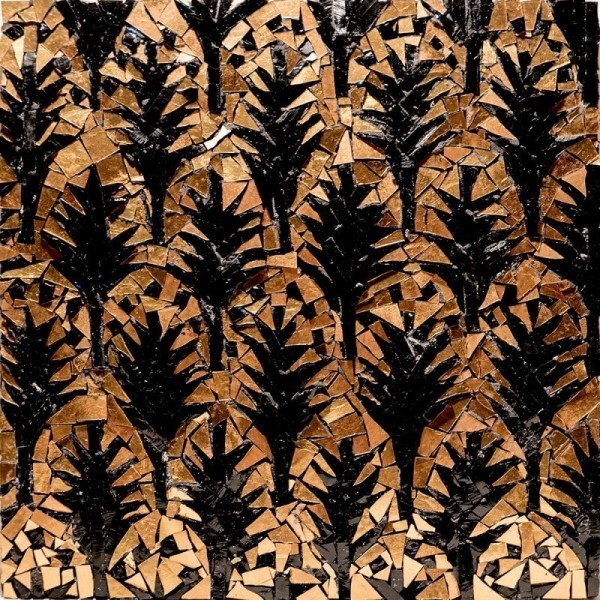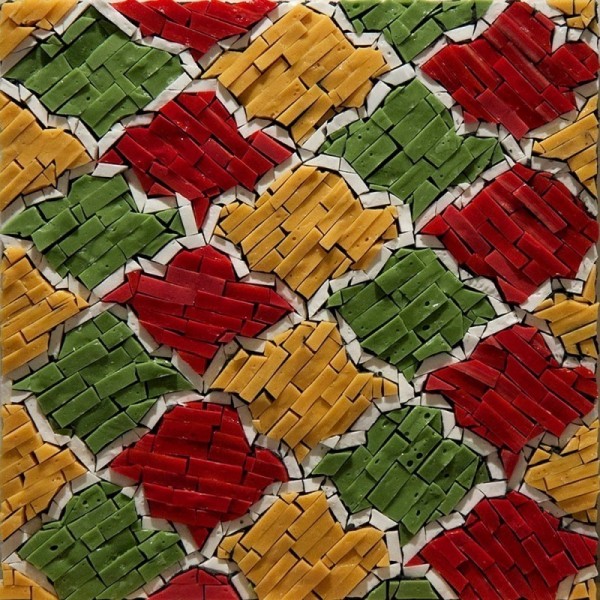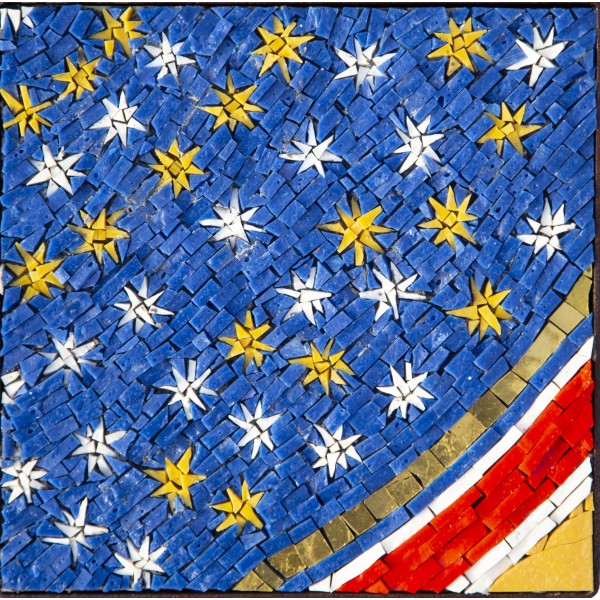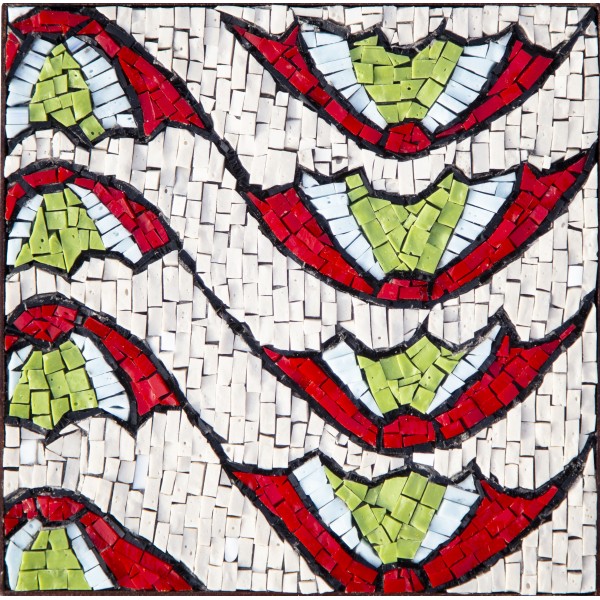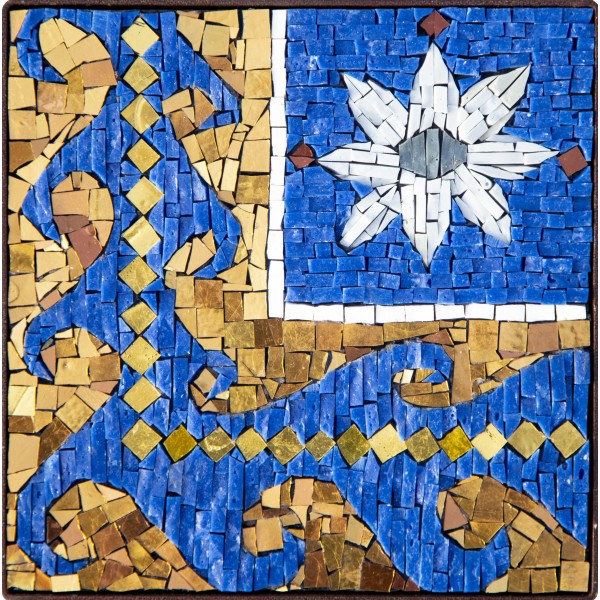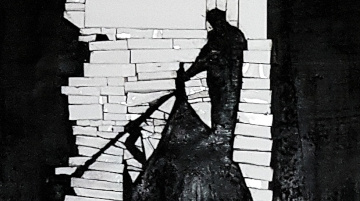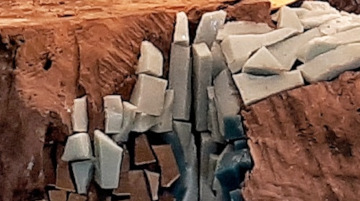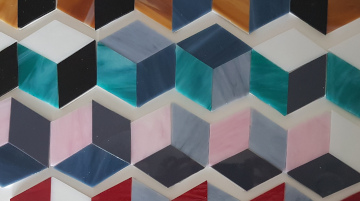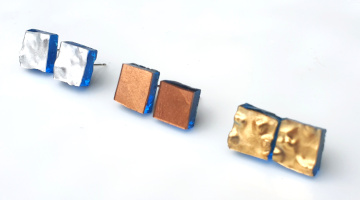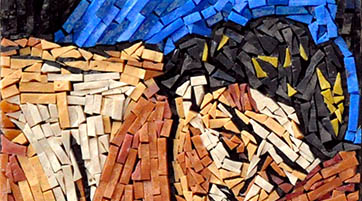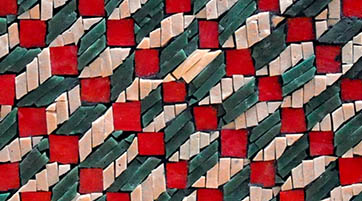Treviso - Inspired by Fresco of the Convent of the Preachers of San Nicolò. Cell towards the church. Sec XIV - scale 1:10
Mosaic, 20x20 cm.
Motif 1 from “Triptyque Treviso” inspired by designs of false upholstery frescoes in Treviso homes. Made with glass paste tiles, from the kilns of the Fornace Storica Orsoni. Colours: cherry red, brilliant green and beige.
Each mosaic can be framed to choice: wood (treated and waxed) either whitewashed or dark-brown effect; otherwise oxidized iron whichever best fits with your environment and personal taste.
Detalis on “More info” and “The Work”.
Glass paste mosaics inspired by Fresco of the Convent of the Preachers of San Nicolò. Cell towards the church. Sec XIV - scale 1:10.
Specifications:
Supporting material: wood
Measure of mosaic: 20x20 cm.
All the mosaics can be mounted on a wooden or iron frame.
Frame:
mounted on a handpainted wooden frame (with wax treated wood): light/dark effect
overall dimensions: 30x30 cm,
2 cm Profile thickness or
mounted on a frame of oxidized iron,
overall dimensions: 20x20 cm,
0,2 cm Profile thickness, 5 cm height.
In 1883, the Abbott Luigi Bailo, founder of the Museum of Treviso, published a report about the frescoes that wee salvaged from the demolished church of Santa Margherita del Sile. The Abbott’s young assistant, Girolamo Botter, continued to cultivate the art of restoration and later his son Mario carried on his work.
It is to the latter that we owe the discovery of a great number of frescoes and the renovation of many old houses, a work of research and cataloguing that lasted more than 30 years. What emerges is the image of a harmonious period for Treviso that began in the mid-12th century up until the early 16th century in a fantastic and amazing crescendo. He knew everything about his land: the city went unharmed during the troubled times of the Middle Ages and the foreign invasions, but suffered in recent times: first the bombings during the two world wars, and then the successive waves of urbanization, construction and re-building that followed.
What is left of its original character shows a Medieval Treviso that is filled with color, lively and playful, its old houses decorated with frescoed trompe-l’oeil tapestries inside and out. They contribute towards making Treviso on of the friendliest, most original cities in Italy. Due to the difficulties in finding stone masonry, the many nameless artisans used their painting skills to decorate the houses in the styles of the period.
There are no documents that explain why that was so, as if their fondness for tapestry was spontaneous, a happy coincidence with the free spirit of the city at the time. What is certain is that no other town can boast such a numerous and varied series of motifs as Treviso, rightly known as the most frescoed city in Italy.

